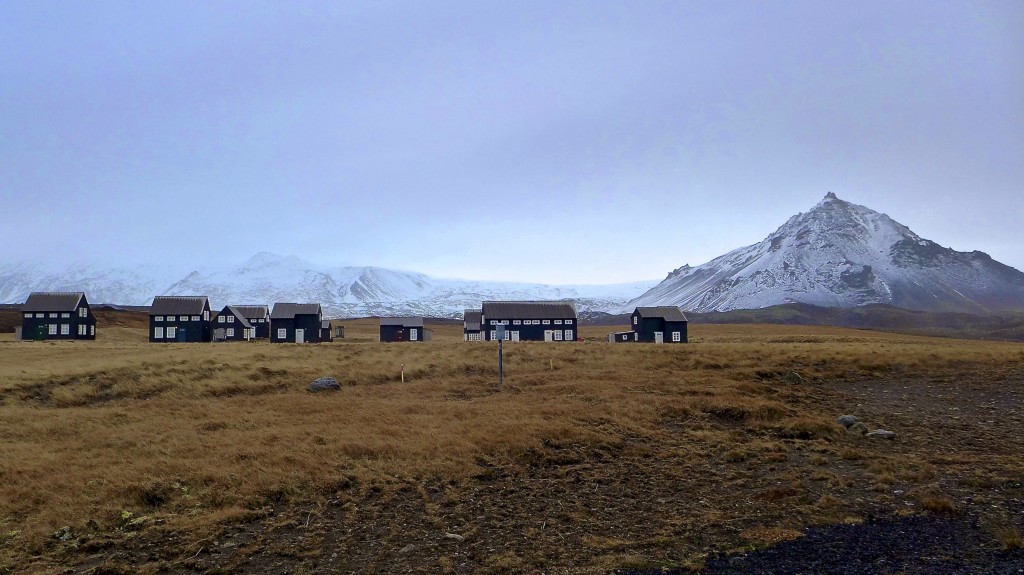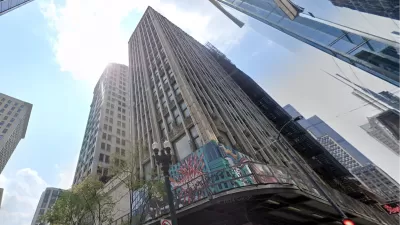In the eighth installment of the Urban Juxtapositions series profiled in Planetizen on January 16, Chuck Wolfe asks if we are using the right language when it comes to densifying urban spaces.
In an illustrated essay that travels from Chicago's Millennium Park to the scaled settlements of Western Iceland, Chuck Wolfe follows up on questions posed early-on in his Urban Juxtapositions series about conceptual approaches to the overlaps, overlays and crossroads of today's city.
The focus? Expectations of "congruity" in urban development:
For many, a dramatic contrast in height, bulk and density is the recipe for “incongruity”. But, in a larger sense, don’t today’s urban centerpieces by definition show the latent “incongruities” of city life?
Wolfe casts "urban blending" and any associated quest for balance as a search for harmony and agreement far more complex than physical appearance, in a comprehensive fashion not limited by ambiguous words:
In other words, the “incongruity” that some would malign as an uneven landscape of height and imbalance, becomes a treasure-trove of irregular, provocative architecture and investment. This investment generates aesthetic and monetary capital to enhance, and not detract from, the public realm nearby.
Offering contrasting examples of classic Icelandic landscapes as instances of "authentic harmony and agreement", Wolfe urges distinction between the balance humans still carry out in the raw landscapes of simpler places and the the vocabulary of balance often sought in in the urban context.
He concludes:
If we remember these nuances in urban setting today, we will better understand that balance and “congruity” are not absolutes, but end-games with multiple meanings, dependent on context, and careful reflection.
FULL STORY: urban blending and the mythical search for 'congruity' in the city

Study: Maui’s Plan to Convert Vacation Rentals to Long-Term Housing Could Cause Nearly $1 Billion Economic Loss
The plan would reduce visitor accommodation by 25,% resulting in 1,900 jobs lost.

North Texas Transit Leaders Tout Benefits of TOD for Growing Region
At a summit focused on transit-oriented development, policymakers discussed how North Texas’ expanded light rail system can serve as a tool for economic growth.

Why Should We Subsidize Public Transportation?
Many public transit agencies face financial stress due to rising costs, declining fare revenue, and declining subsidies. Transit advocates must provide a strong business case for increasing public transit funding.

How to Make US Trains Faster
Changes to boarding platforms and a switch to electric trains could improve U.S. passenger rail service without the added cost of high-speed rail.

Columbia’s Revitalized ‘Loop’ Is a Hub for Local Entrepreneurs
A focus on small businesses is helping a commercial corridor in Columbia, Missouri thrive.

Invasive Insect Threatens Minnesota’s Ash Forests
The Emerald Ash Borer is a rapidly spreading invasive pest threatening Minnesota’s ash trees, and homeowners are encouraged to plant diverse replacement species, avoid moving ash firewood, and monitor for signs of infestation.
Urban Design for Planners 1: Software Tools
This six-course series explores essential urban design concepts using open source software and equips planners with the tools they need to participate fully in the urban design process.
Planning for Universal Design
Learn the tools for implementing Universal Design in planning regulations.
City of Santa Clarita
Ascent Environmental
Institute for Housing and Urban Development Studies (IHS)
City of Grandview
Harvard GSD Executive Education
Toledo-Lucas County Plan Commissions
Salt Lake City
NYU Wagner Graduate School of Public Service





























